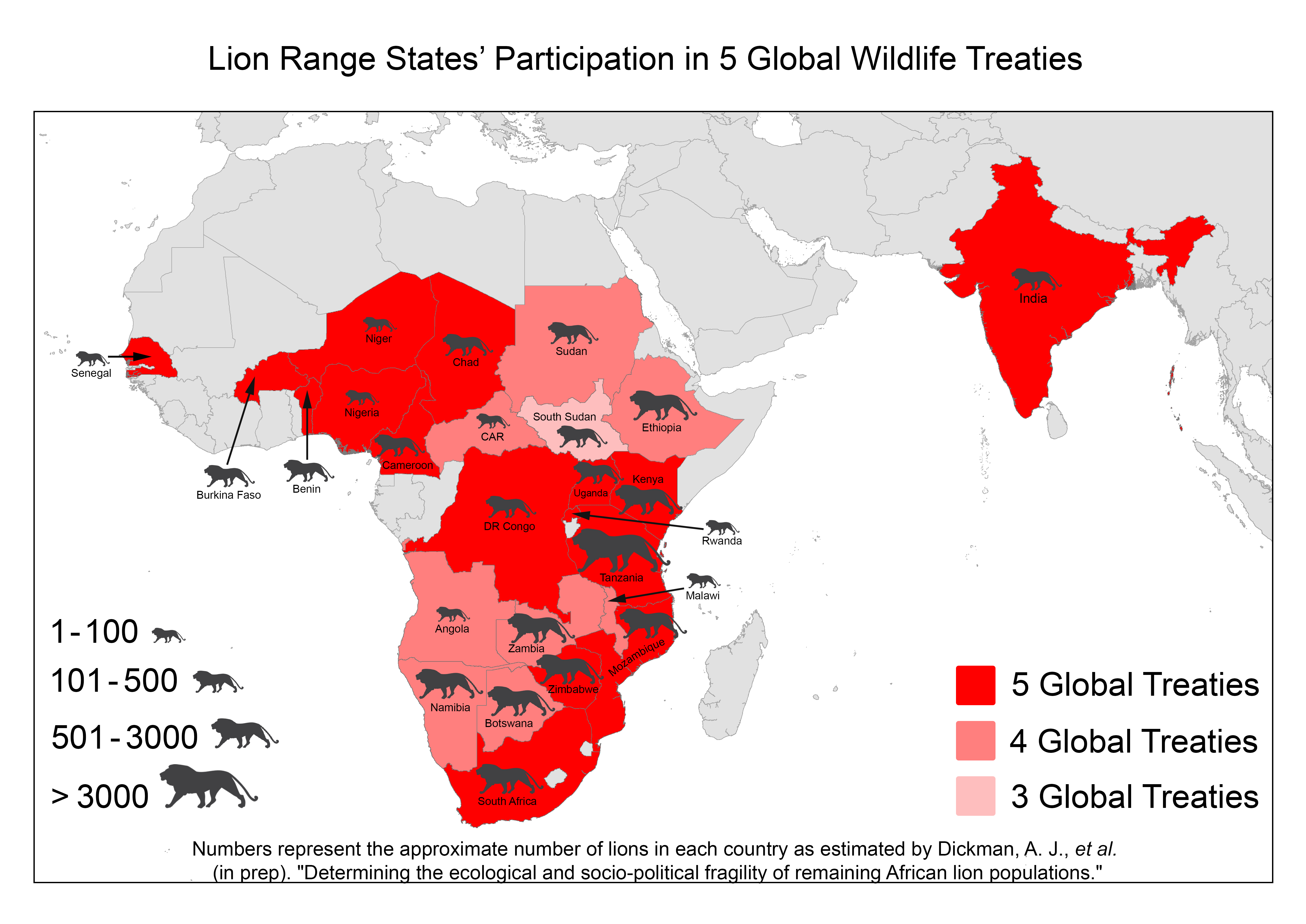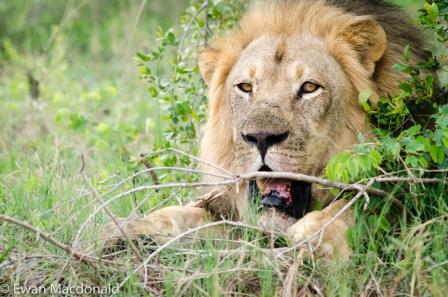News
How international treaties can help lions
Lions are, collectively, in trouble. Recent estimates suggest populations of wild lions in Africa have fallen below 30,000 in number. In an ongoing collaboration with legal researchers Arie Trouwborst and Melissa Lewis at Tilburg Law School, researchers at WildCRU have been asking how international treaties can help to save the species. In previously published work the team documented the various protections to lions provided by the major international wildlife treaties (such as the Convention on Biological Diversity, the Convention on Migratory Species, and CITES), as well as by some regional treaties and agreements (including the 1968 African Convention).

In a new paper, published in the journal Biodiversity and Conservation and available as open access, the same team has mapped the various legal protections provided by international treaties against the specific threats that are facing contemporary lions. Drawing on multiple threat assessments, the paper asks what treaties can do to address the most critical issues facing lions: human-lion conflict (i.e. retaliatory or pre-emptive killing of lions), and bushmeat poaching (which reduces the food source available to lions). The paper also considers where treaties can assist in addressing additional threats, such as illegal trade, poorly- managed trophy hunting, habitat loss and human encroachment.
In particular, the paper provides a detailed analysis of the decision at the recent Conference of the Parties of the Convention on Migratory Species to add lions to Appendix II of the treaty. The authors assess how this politically contentious ‘uplisting’ can facilitate more effective lion conservation, through providing a platform, support and funding for special initiatives to address specific threats – like those identified above.
International agreements are one thing, but applying and enforcing them quite another. The paper also addresses the challenges in utilising international treaties for conservation: from national-level issues around governance capacity, to the contextual specificities of implementing effective regulations across diverse social and cultural contexts. In conclusion, the authors suggest several pathways to improving the (international) legal protections for lions:
- “Expanding the application of global treaties in respect of lions and their habitats,
- Improving the local-level implementation of treaty commitments through participatory regulatory developments, and
- Supporting implementation and enforcement capacity at national and local scales.”
References:
Hodgetts, T., Lewis, M., Bauer, H., Burnham, D., Dickman, A., Macdonald, E., Macdonald, D., Trouwborst, A. (2018) Improving the role of global conservation treaties in addressing contemporary threats to lions, Biodiversity and Conservation






